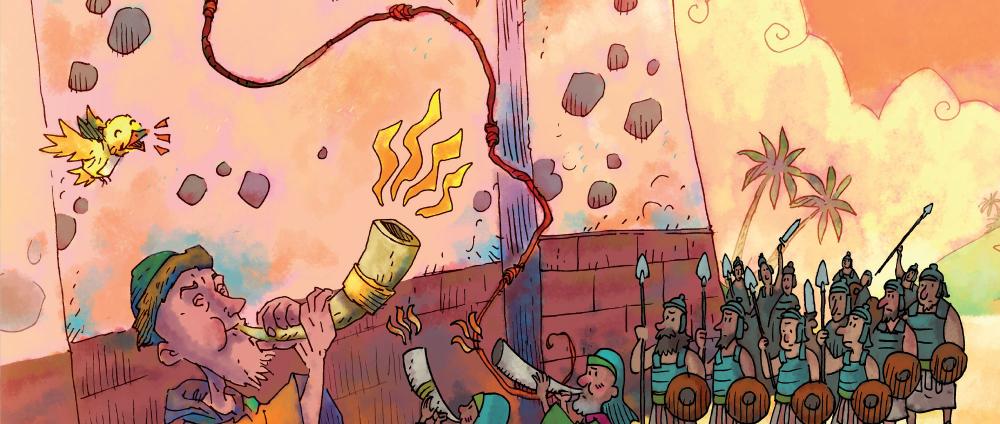
Hannah Prays to God
- Tell how God answered Hannah's prayer.
- Feel assured that God hears and answers our prayers.
Leader Reflection
Here's a story of gynecological, psychological, and marital issues that, at first glance, doesn't seem especially appropriate for young children. Hannah is one of two wives (the favored one) of Elkanah. She's barren, and the other fertile but less favored wife, Peninnah, teases her mercilessly. Yet it's a story beloved by and appropriate for children because they understand disappointment, teasing, and jealousy all too well.
Elkanah's family was godly. He took them to the tabernacle at Shiloh each year as a kind of spiritual pilgrimage. But the trip always turned into a nightmare for Hannah. Because Elkanah loved her best, he gave her more food and gifts. This, of course, provoked Peninnah to fits of jealousy. Elkanah, who seems clueless to the trouble in his own tent, wonders why Hannah can't be happy with his love alone. The whole chapter is a good argument against polygamy!
The drama takes a new turn when, in tears and bitterness, Hannah goes to the house of the Lord to pray. We get the impression that it wasn't Hannah's regular practice to go to the house of the Lord; perhaps that role was typically reserved for the men of Israel. At any rate, she is there praying silently, pouring out her anguish before the Lord. Hers is the kind of prayer we see rather frequently in the Old Testament, a lament that's on the edge of accusation—"O Lord, if you will only look on your servant's misery and remember me . . . ." This is a kind of powerful and honest prayer we don't hear much in the church, but it's standard in the Bible.
Hannah, like many other desperate sufferers, makes a promise to God: if God will but give her a son, she'll dedicate him to the Lord. He'll be a Nazirite, a special order of men dedicated to God's service (see Numbers 6). It's important to remember that there's no indication that the Lord answered her prayer because of her promise, as though God's favor depends on something we pledge or do for God. Still, that was her commitment, and she kept it.
In stumbles old Eli, the priest at Shiloh. Perhaps he isn't used to seeing women praying in the house of the Lord, but he jumps to a rather harsh conclusion. There she is mumbling to herself, obviously distraught. She must be drunk. And he upbraids her for it.
Hannah denies this, informing Eli of the truth: she's been praying. Eli blesses her, commends her prayer to God, and sends her away.
With a lovely combination of religious commitment and marital love, the Bible describes what happens next. "Early the next morning they arose and worshiped before the Lord and then went back to their home in Ramah. Elkanah made love to his wife Hannah, and the Lord remembered her" (v. 19). She names the child Samuel, which sounds like the Hebrew for heard by God.
Hannah doesn't return to Shiloh until after little Samuel is weaned. On the next annual excursion she goes back and presents Samuel to Eli, reminding him of the day she had prayed in the house of God for a child. Then, just as she had promised, she gave him over to the Lord, an act that strikes us with our modern sensibilities as an almost reckless demonstration of her faith and commitment.
Samuel was to become one of the great prophets of Israel, and Hannah's prayer of thanksgiving became the model for Mary's Magnificat.
The tabernacle can be difficult to understand. People often think of it as a tent, but the tabernacle included a big outdoor space inside of which was a tent. The tabernacle was surrounded by curtains with a fabric entrance on one side. Priests and lay people would go through that entrance to the open tabernacle court. This is where the altar was for offering sacrifices. The tent inside the tabernacle was a holy place that only priests could enter. A part of that tent was the holy of holies, where the ark of the covenant was kept. Because only priests were allowed in the tent, lay people like Hannah would have remained in the outdoor courtyard area of the tabernacle. Though we often picture Hannah praying in a building, like a church, most likely she would have been in the open, outdoor court of the tabernacle. Use the tabernacle coloring page in Easy Extra #1 to help your group visualize the setting for today’s story.
Steps
Step 1 Breathe
Use this time to focus your attention on God.
Do this with me: calm your head, heart, and hands as you slowly breathe in . . . and out. (Demonstrate a few deep "in and out breaths" with eyes closed.)

Get Unlimited Access!
Sign up for DWELL Digital to unlock all online leader resources, printable pages and session plans.
Call 800-333-8300 or Request Access
Already a subscriber? Log In
Learn About DWELL
DWELL helps kids find their place in God's Big Story. Learn more about this popular and trusted children’s ministry curriculum.
